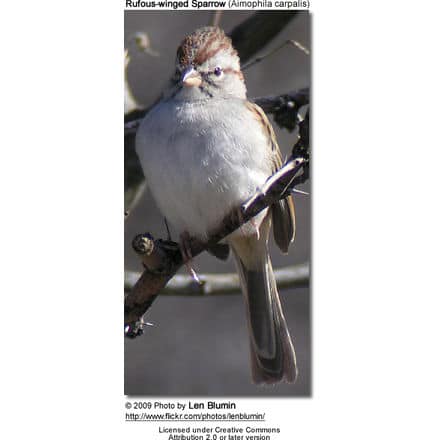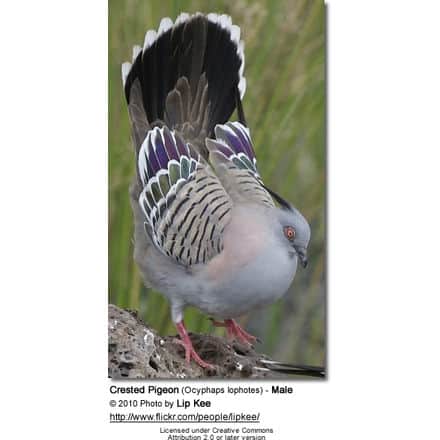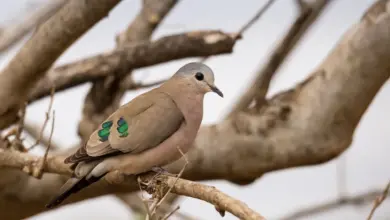Rufous-winged Sparrows
The Rufous-winged Sparrows, Aimophila carpalis, is a slender sparrow with a gray face and a brown streak that extends behind the eyes.


Appearance
The back is brown with darker streaks, while the belly is pale gray. The wings and crown are rust-colored. The sparrow has a yellow, conical bill, and a long, brown tail.
Range
A. carpalis is a year-round resident from south-central Arizona south into Mexico.
Habitat
The Rufous-winged sparrow inhabits desert grasslands scattered with thorn bushes, bunch grasses, mesquite, or cholla. It also occurs in washes with sandy bottoms and vegetated slopes, brushy irrigation ditches, and creeks bordered by broad-leaved trees, mesquite, grasses, and weeds.
The sparrow prefers grassy areas with scattered shrubs that are thorny and dense.
Diet
During the breeding season, A. carpalis feeds on a variety of insects caught on the wing or gleaned off plant surfaces.
At other times, the bird eats grass and weed seeds.
Reproduction
A. carpalis breeds during the monsoon months of July and August. The nest is built low to the ground on the edges of bushes such as hackberry, palo verde, cholla cacti, or mesquite. The average clutch size is four, and the sparrow can have two broods per year
Status
This species is listed as a migratory bird under the Migratory Bird Treaty Act.
History in Pima County, Arizona
The Rufous-Winged Sparrow in Pima County: This species was first discovered in 1872, near old Fort Lowell, Tucson, where it was described as “very common”. In 1881, the sparrow was found: “sparingly about Tucson and Camp Lowell.
It inhabited the mesquite thickets, keeping closely hidden in the bunches of ‘sacaton’ grass, from which, when flushed, it flew into the branches above.”
After 1886, verified species records were exceedingly rare. The species was considered extinct in Arizona due to overgrazing.
The rufous-winged sparrow was rediscovered in 1936, the first record in over fifty years. The sparrow now has records throughout much of eastern Pima County; in Canoa Ranch, Madera Canyon, Santa Rita, and Santa Catalina Mountains, and in areas around Tucson.
Loss of habitat as a result of overgrazing and urban development is believed to have had the greatest effect on populations.
Beauty Of Birds strives to maintain accurate and up-to-date information; however, mistakes do happen. If you would like to correct or update any of the information, please contact us. THANK YOU!!!






